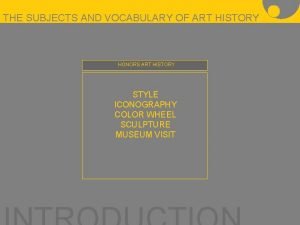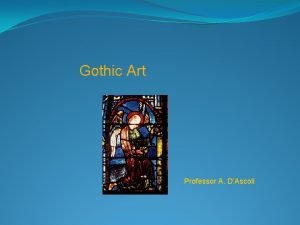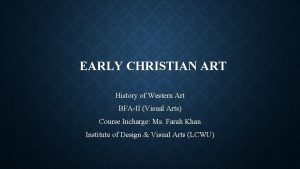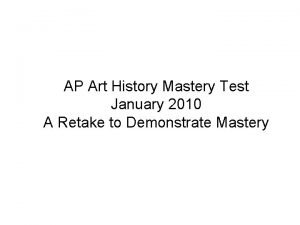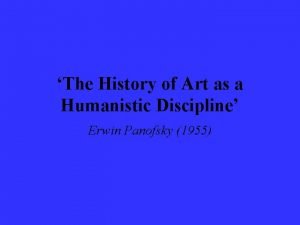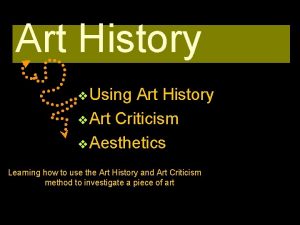What is Art Art History AP Art History








- Slides: 8

What is Art? Art History? AP Art History Things to know for our first test

The central questions in this course include the following: • What is art and how is it made? • Why and how does art change? • How do we describe our thinking about art?

Unifying themes for the Art History course: 1. Spirituality – Sacred space and the spiritual in art. How world religions create very different religious art objects and places of worship? 2. Creativity – The nature of the creative process. How the idea of “creativity” relates to art making within various cultures. 3. Realism v. s. Abstraction – The changing definitions of “realism” Why does abstraction occur in diverse cultures and periods of art? 4. Intellectual v. s. Emotional – Art’s intention to provoke the intellect of fire the emotions. How these different aspects of being human find expression in art. 5. The Individual v. s. the Community – The role of the artist within larger communities including relationships with their patrons. Works of art as both collective and individual aspirations. 6. Propaganda – Art in the service of politics and religion to push an agenda. Art as an expression of power and authority.

Unifying themes for the Art History course: 1. The Ideal – Sources and definitions of the “Ideal” in art and culture. The ever changing relationship between Ideal and real. 2. Style – Conventions and formulas for identifying style in art. How style changes over time and between cultures. 3. Aesthetics – Strategies of aesthetic valuing. The changing definitions of “beauty” in art. 4. Historical Record – Subjective vs. Objective recording of reality. Art as a catalyst for change. Art as protest and dissent 5. The Nude – Ideas of perfection related to human form. The human body as metaphor 6. Change as a Tradition in Western Art – The concept of “Modern” and its relationship to the avant garde. Reading contemporary culture and values through the study of art objects and architecture.

What types of knowledge, information, skills do we need to know/master in order to be successful? 1. Visual Recall of a work 2. Identification 3. Content/Iconography 4. Function/Symbolism 5. Formal qualities / Style 6. Context – History and Meaning 7. Materials and art making techniques 8. Attribution 9. Cross cultural connections 10. History of the object/change over time

What types of broad skills need to be developed in order to have success? 1. Visual Literacy – close and sustained looking 2. Language Development – Specific art vocabulary. Verbal description and written analysis 3. Reading expository text and primary/secondary sources 4. Critical thinking 5. Information management – Memory 6. Organizational skill and note taking 7. Test taking skills 8. Research skills 9. Cooperative learning skills



